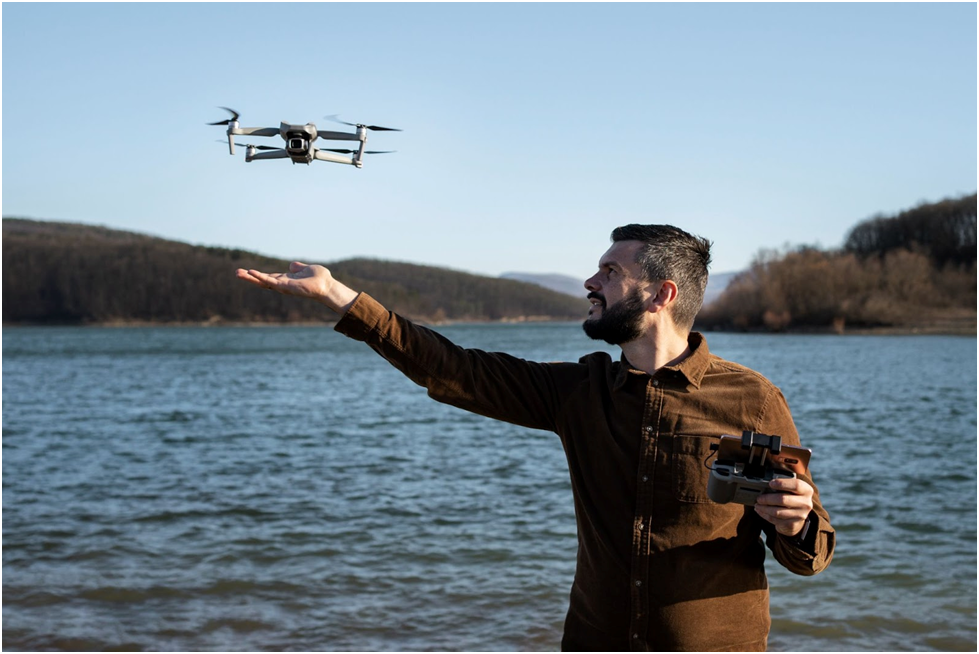Top Beginner Drone Mistakes and How You Can Fly Smarter
By Damon Johnson, Founder of Raising Drones
Getting your first drone is an exciting moment, and trust me, you’re in for an adventure. Flying drones can be a lot of fun, and it can even turn into a real business. But before you take off, let me help you avoid some of the common mistakes beginners make. Trust me, I’ve made a few of these myself (okay, maybe more than a few).
In this blog, I’ll walk you through the most common beginner mistakes and how to avoid them. Whether you’re flying for fun or thinking about starting a drone business, these tips will help you fly better and safer.
1. Not Checking Your Drone Before You Fly
This is the #1 mistake most new pilots make. You grab your drone, hit the power button, and send it into the air without looking at anything.
Before every flight, you should check:
Battery level (on both the drone and the remote)
Propellers (are they tight and not broken?)
GPS signal
Return-to-home settings (so your drone knows where to come back)
If you skip this step, you could lose your drone—or worse, crash it into something.
2. Flying Indoors Too Soon
I know the feeling—it’s raining outside, and you really want to fly. So you try flying inside your house.
Bad idea.
Indoor flying is harder than it looks. You’ve got walls, fans, lights, and pets to deal with. If you’re new, start outside where there’s more space. If you must fly inside, use a small training drone like the Ryze Tello. It’s cheap, light, and won’t break your TV.
3. Ignoring the FAA Rules
Even if you're just flying for fun, there are rules you need to follow. And if you plan to make money with your drone, you must get your Part 107 license from the FAA.
Some basic rules include:
Don’t fly above 400 feet
Keep your drone in sight
Don’t fly near airports or emergency scenes
Stay out of people’s way
The full list of rules is available on the FAA’s drone site.
4. Flying in Windy Weather
If the wind is strong enough to mess up your hair, it’s probably too strong for your drone—especially if you're new.
Drones can drift, lose control, or struggle to return home in the wind. Always check the weather before flying. You can use UAV Forecast to see if conditions are safe for flying in your area.
5. Relying Too Much on Auto Modes
Yes, drones today are smart. They can take off, land, follow people, and fly perfect circles—all by themselves.
But here’s the thing: if something goes wrong, you need to know how to fly without all that help.
Practice flying in manual mode. Learn how to take off, land, hover, and turn smoothly without relying on auto features. If you ever lose GPS or get a weak signal, this skill could save your drone.
6. Skipping Updates
Your drone and its app need regular updates to work properly. Skipping these updates can cause glitches or problems during flights.
Before flying, check if your app or drone is asking for an update. It only takes a few minutes and can save you from a crash or lost drone.
7. Trying Fancy Tricks Too Early
I know those YouTube drone videos look cool—backflips, fast dives, flying through tight spaces. But don’t try to be a pro on day one.
Start slow. Practice easy moves like:
Flying forward and backward
Hovering in place
Turning in a circle
Flying around objects
When you’re ready, you can learn more advanced moves. But don’t rush it—you’ll fly better (and safer) in the long run.
8. Not Having Insurance
Crashes happen. Even to experienced pilots.
If you’re using your drone for business or flying often, insurance is a smart move. It protects you if your drone hits something or someone, or if it crashes and breaks.
Check out SkyWatch.AI or Thimble (Verifly) for simple, on-demand drone insurance.
9. Trying to Learn Everything Alone
You don’t have to figure this all out by yourself.
There are tons of great YouTube channels and communities where you can learn and get better. Some of my favorites:
And of course, we’ve got lots of tips, training, and advice right here at Raising Drones. Whether you need help passing your Part 107 test, choosing a drone, or starting a drone business—we’ve got your back.
Final Thoughts
Flying drones is fun. But it’s even more fun when you know what you’re doing. Avoid these beginner mistakes, and you’ll save money, protect your drone, and fly with confidence. Take it slow, learn the basics, and reach out if you ever need help.
You don’t have to be perfect—you just have to be smart. And smarter flying starts right here.
Fly safe,
Damon Johnson
Founder, Raising Drones
www.raisingdrones.net

